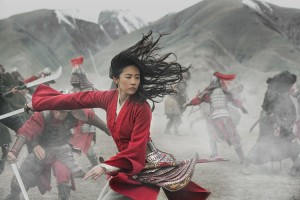오늘의 한마디
The “Real” Mulan

On Friday, September 4, the Walt Disney Company released a live-action version of Mulan, the story of a female Chinese warrior. The film is a remake of Disney’s popular 1998 animated motion picture Mulan. The film was supposed to be released in March. But, the premier was postponed because of the spread of the coronavirus disease COVID-19 and the lockdown that followed, keeping people out of theaters. The movie will premiere on the streaming service Disney Plus. The film will also be released theaters in places where they are open.
There are a few things you can do to prepare for the movie. One, make popcorn. Two, get candy—lots of it. And three, learn more about the legend that inspired the film.
Mulan, also known as Hua Mulan or Fa Mu Lan, was a legendary female warrior of ancient China. Mulan’s story was told in a famous poem first transcribed in the A.D. 500’s, the “Ballad of Mulan” (“Mulan Shi” in Chinese). Mulan is one of history’s most popular folk heroines and a symbol of bravery and hope.
According to legend, Mulan was washing or weaving clothes when the imperial army came to her town. They recruited male soldiers from each family. Mulan’s father, Huan Hu or Hua Hu, was old and unwell, and her brother or brothers were too young to go. With her parent’s blessing, Mulan disguised herself as a man, posing as their son to join the army in her father’s place. Mulan served in the army for over a decade. She became highly regarded and was promoted to the rank of general. In place of an official post, she asked to return to her family. Mulan was honored by the emperor. When she changed into women’s clothing to return home, the other soldiers were surprised, having no idea she was a woman.
In some versions of the story, Mulan falls in love with an officer named Jin Yong. In some versions, Mulan arrived at a dangerous battle in women’s clothing, and was met with admiration of her troops. The female warrior’s bravery inspired them, and they went on to win the battle. Once the emperor learned of the victorious female leader, he wanted to reward her. Mulan asked for a horse or camel to return home. Some stories said Mulan’s father died while she was away. Mulan, lonely and grieving, died by suicide. Other versions ended with her marriage to Jin Yong.
The “Ballad of Mulan” may be fictional. However, women warriors and military commanders played a part in ancient Chinese history. If Mulan was inspired by a real person, she likely lived during the Northern and Southern dynasties period (A.D. 420-589). Many details of her story were added later during the Tang dynasty (A.D. 618-907), when stories of warrior women were popular.
In 1593, during the Ming dynasty (A.D. 1368-1644), the story of Mulan was told again by Xu Wei in the form of a play called The Female Mulan or The Heroine Mulan Goes to War in Her Father’s Place. Mulan is also featured in the novel Sui Tang Romance, released in 1695 during the Qing dynasty (A.D. 1644-1912). The story set Mulan’s life during the Tang dynasty. Mulan became laotong (bonded sisters) with the king’s daughter, a female warrior named Dou Xianniang. The king was defeated and the laotong offered their lives to the invaders to save the army. Instead, the Emperor’s mother gave Mulan money for her family. Mulan returned home to find her father had died and her mother remarried. Mulan killed herself rather than serve as the emperor’s concubine (mistress).
Mulan’s story has been retold countless times. She has been the subject of motion pictures, books, operas, plays, and poems. A crater on the planet Venus was named after Mulan.
